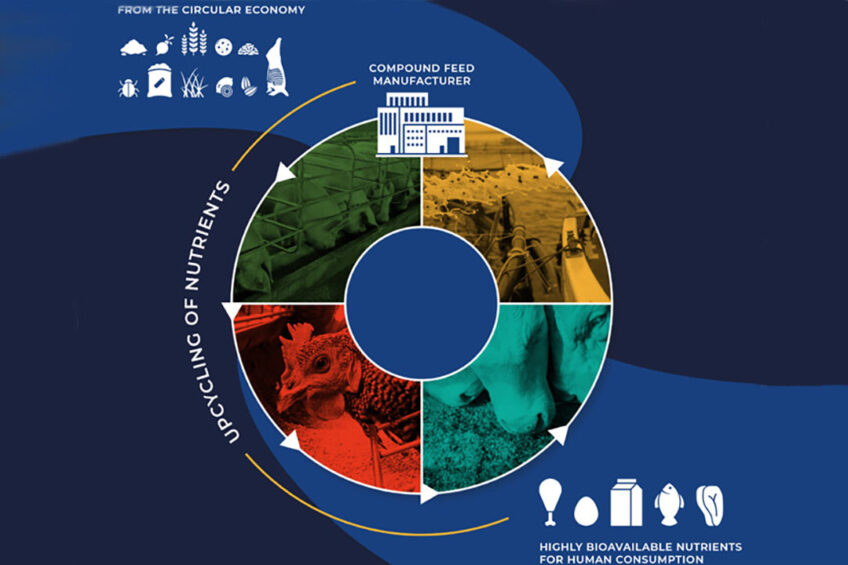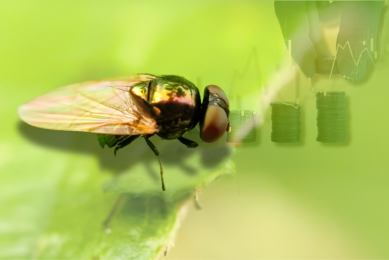Circular Feed – FEFAC report

A new report from FEFAC highlights what is already occurring in terms of reclaiming nutrients from various sources and what’s ahead.
“The upcycling of nutrients through farm animals, converting secondary raw materials to highly-bioavailable nutrients for human consumption, is an important part of our license to produce as European feed manufacturers.”
That’s the message of Asbjørn Børsting, President of FEFAC, the industry association for the European Compound Feed & Premix Industry, which recently released a new publication called “Circular Feed – Optimised Nutrient Recovery Through Animal Nutrition.”
This report showcases the European feed industry’s practical interpretation and illustration of the circular feed concept, pointing out what’s already happening in the sector to contribute to recovering nutrients.
“We can provide many concrete examples already today, allowing us to increase the share in feed formulations of circular feed, not competing with direct human food use,” said Børsting (see box for examples).
At the same time, FEFEC recommends “a critical review of current bottlenecks in the EU regulatory framework that restrict circularity in EU food systems through animal nutrition” to allow for further optimisation of the potential of the circular economy in the forthcoming EU Sustainable Food Systems Framework.
This publication was written for everyone in Europe – the feed industry, competent authorities, suppliers, customers, the academic community and any other interested stakeholder.
“What we are proposing implies a fundamental change to the food system, and that is of importance to the whole of society,” says FEFAC Deputy Secretary General Anton van den Brink. “As highlighted in the publication, market and consumer acceptance are of crucial importance here if there is any chance of making significant changes in a transparent way.”
Making the report
In terms of what was challenging about gathering information for this ground-breaking report, van den Brink says although FEFAC knew there is interest in the scientific community to define circularity parameters in feed production, he and his team had to develop the conceptual approach ourselves with FEFAC members.
“While this was a challenge in itself, striking the right balance was another,” he explains. “Some may feel that some of the components that we included to help determine circularity will not have been the right ones, while other may have hoped that we would have gone further and given a more conclusive classification.”
In the end, van den Brink says, the industry should recognize this is work in progress and there is room for improvement. In FEFAC’s view, the report is a good start to what eventually may need to become a real statistical circularity indicator.
“In the context of the development of the publication, we also ran a webinar where some future examples of circular feed were showcased,” he adds. “There is certainly potential to do this again if we take note of more examples.”
Expected industry reaction
FEFAC is of course hoping the information and examples in this published report enable more circular nutrient recovery in the near and long-term.
One impediment, however, is using sources of nutrients that could go into animal feed instead for bioenergy production.
“Although we are coining these resources as circular feed, we are also mindful that competition for similar streams of residual biomass between food, feed and bioenergy use will become more critical,” explains van den Brink. “For us, this publication is also a signal to our suppliers that directing their co-products as feed for food-producing animals enables them to expand on their ‘food production yield.’ In fact, we believe there is a responsibility for the food manufacturing/processing industry to make a maximum contribution to food security, rather than bioenergy production.”
This publication is also a call, says van den Brink, to re-assess the EU regulatory framework to facilitate added safe recovery of nutrients through an upcycling process, involving intermediary organisms. This really links up well, he notes, with R&D at many feed companies to develop new sources of feed, which currently are not accommodated by the EU regulatory framework.
Looking forward, van den Brink says that as the public consultation phase of the European Commission’s Initiative for Sustainable Food Systems is currently happening, the timing of the publication is very good. “In the short term we would therefore hope that the role of feed manufacturing to boost circularity in sustainable food systems is recognized as a key objective,” he says. “However, changes to the EU regulatory framework is always a long-term matter.”











